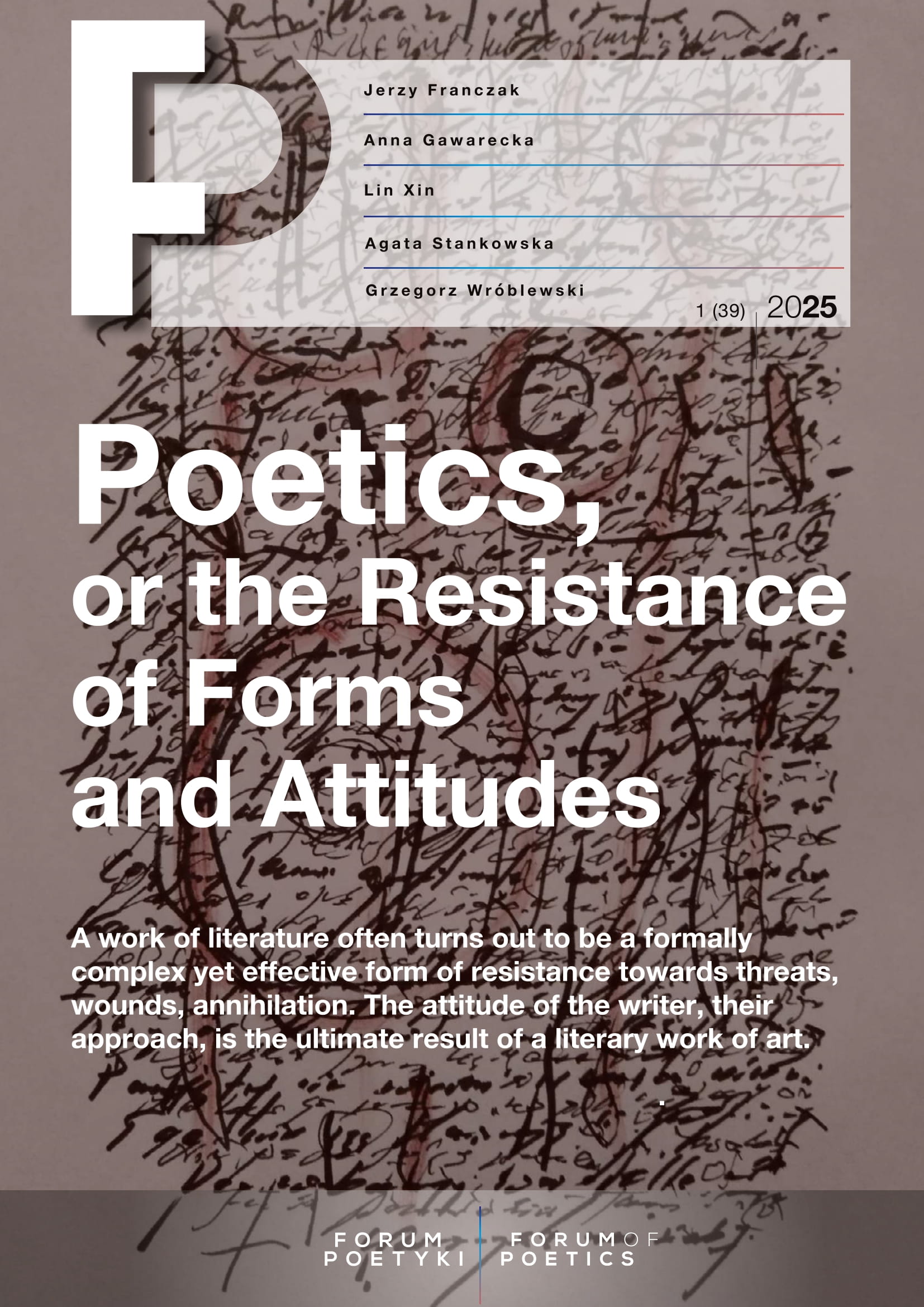Contemporary multidisciplinary resistance studies and practices explore many intriguing literary works. Some writers argue that the literary forms they develop are also forms of resistance and resilience. However, this formal aspect of literary forms as resistance and resilience seems rather mysterious. Let us thus, for example, draw on Amanda Anderson and compare the creation of a literary character to the (therapeutical) process called rumination. The readers may in this process experience and get to know the character’s obsessive and intrusive thoughts which, in turn, makes us reflect on the possibility of how one may cope with them. The poet Janusz Szuber, who suffered from a chronic disease throughout his adult life, repeatedly tried to approach his biography in his poems, searching for a form that would allow him to effectively resist the pain he experienced. In the last self-edited anthology published during his lifetime, he noted that he had finally managed to “adopt an attitude” towards the existential fear of death. Paradoxically, as he said, he embraced unstructured biographical “drifting,” that is, instead of constantly brooding over his fractured biography, he began to experience and record every moment. Each was an unexpected and invigorating moment of contact with the Zeitgeist. Another example is Florin Irimia’s The Mystery of the Chinese Toy Cars. In this book, the Romanian writer tried to face the trauma of his childhood, including the divorce of his parents, the difficulties of life in a communist state, his Moldovan identity (which was deemed problematic in Romania), and many other painful problems. Unresolved problems came back to haunt him years later in his novel. As a result of literary rumination, the protagonist-writer finally developed an attitude that allowed him to resist the burden of the past. A work of literature thus often turns out to be a formally complex yet effective form of resistance towards threats, wounds, annihilation. The attitude of the writer, their approach, is the ultimate result of a literary work of art and it is, in essence, a question of form.
The articles in this issue of Forum of Poetics touch upon various formal aspects of resistance and immunity in literature. Jerzy Franczak, drawing on, among others, Roberto Esposito’s reflections on the nature of immunization, presents a new theory of literature as a theory of literary immunity. His take on immunization and communization in literature opens up a vast new area of research. Anna Gawarecka describes how interwar Czech literature absorbed the “alien” body of circus art and thus developed innovative attitudes in modern Czech literature. Sonia Nowacka explains how Walter Crane tried to heal modern art through a new approach to decorative art that was often rejected by the avant-garde. Lin Xin, in his reading of Stanisław Lem’s Solaris, shows that a threat of annihilation posed by a gigantic alien creature forces the staff of a planetary research station to quickly develop effective coping strategies so as not to allow the cosmos to affect their psyche. Jinlin Li writes about autothematic Chinese poems, analyzing many surprising formal solutions and, above all, the changing attitudes of poets tormented by their will to create. The outstanding contemporary poet Grzegorz Wróblewski explains in an interview that his mysterious texts known as asemic writing are an attempt to respond to the challenges, influences, and threats of our times. This attempt is not based on semantic games but on a constellation of attitudes towards the world of matter and culture. Agata Stankowska discusses the value of literary polemics in developing new writerly attitudes towards ideas and rhetorical challenges that authors face in the process of – as we would say – painful interpersonal rumination. Finally, Jadwiga Zając writes about the anthology of Anna Świrszczyńska’s poems edited by Konrad Góra which showed the poetess as capable of constantly “transforming ways of thinking.” Sympathetic to all those who suffer, Świrszczyńska continued to believe that well-crafted lyrical forms may lead to a better future for all those hurt by private and social life.
Poetics, as we can see, connects with literary practices and forms of resistance on so many different levels. The question of attitudes or approaches to threats and wounds developed by/in literature, in turn, inspires reflection on the affinities between literature and the visual arts with all their means of expression.
Table of Contents:
Jerzy Franczak, Philosophical immunology and literary immune strategies
Anna Gawarecka, “Circus variations” in interwar Czech literature
Lin Xin, Solaris – the world of “alien(ated/ing) consciousness”
Jinlin Li, Self-Referential Metaphors in Contemporary Chinese Poetry – Reconnaissance






